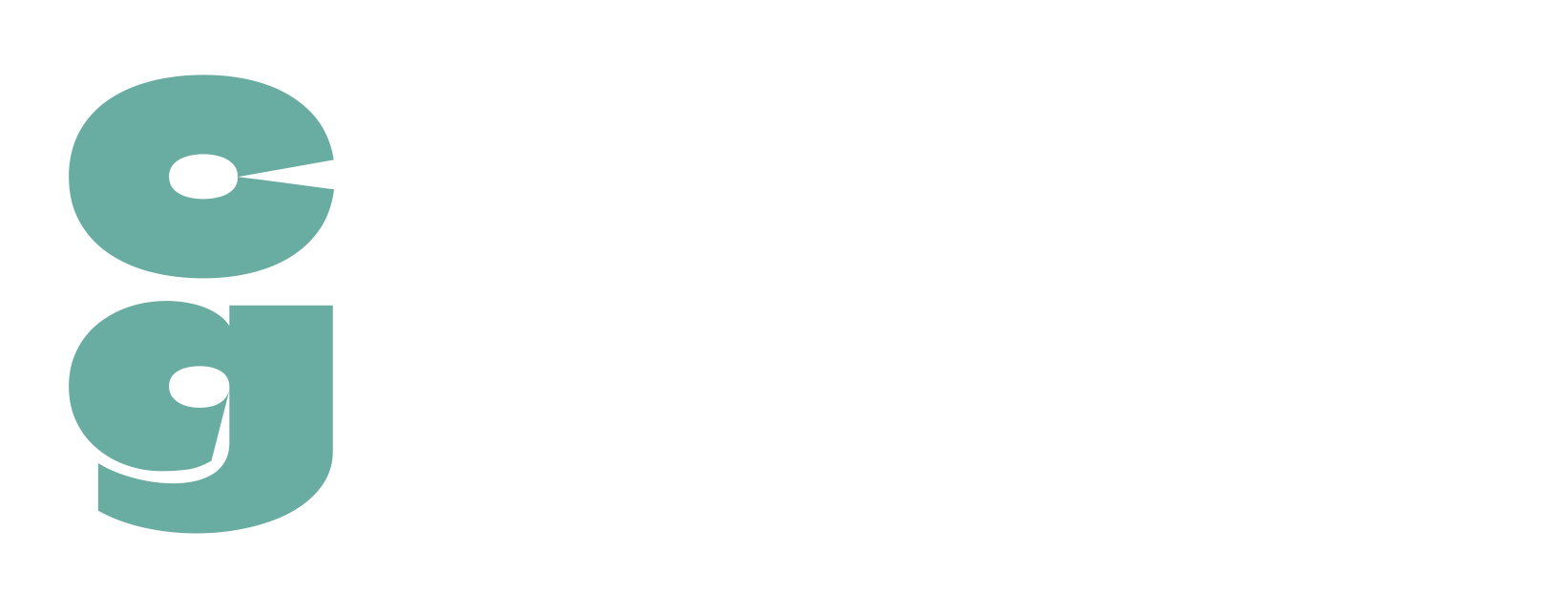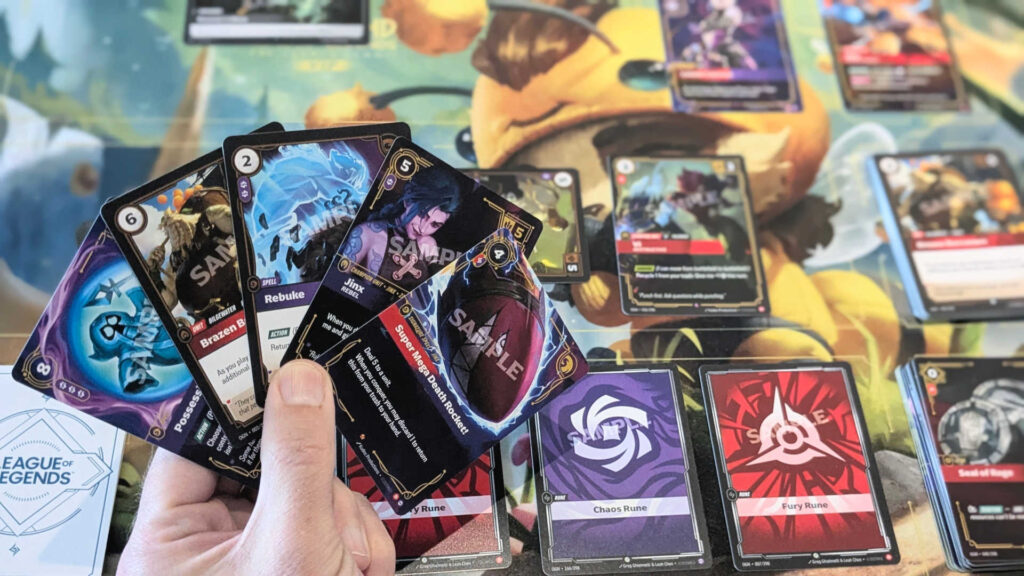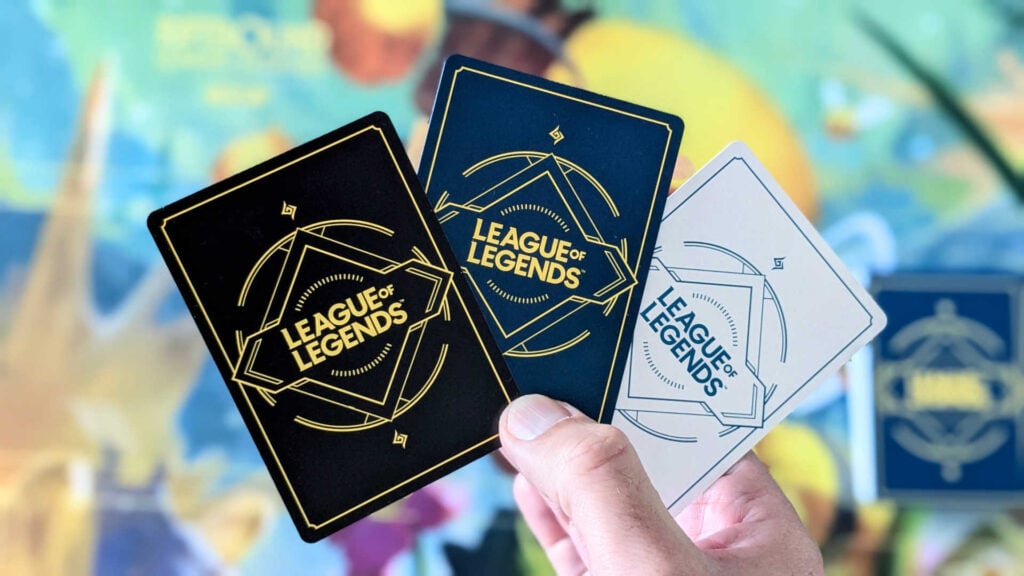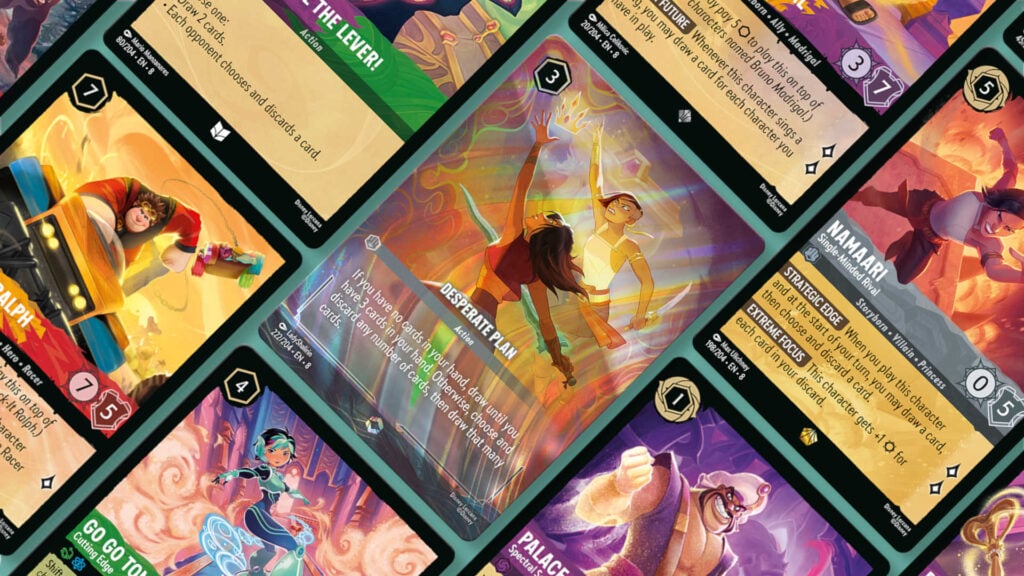The League of Legends trading card game (or TCG), Riftbound, will be available to buy at retail in October 2025 (outside of China, in any case, where it’ll be launched first in July). However, Card Gamer were recently invited to have a full, hands-on experience with Riftbound at Riot Games, where we were able to learn the game, play multiple rounds and even build our own decks to truly sample what the first set, Origins, will have to offer upon release.
Table of Contents
ToggleWhat Is Riftbound?
An entirely new TCG, Riftbound is a game set in the League of Legends universe. For the uninitiated, League of Legends (often referred to by fans simply as ‘League‘) is a free to play, online multiplayer focused title, in which two 5-player teams vie for dominance using decks centred around their chosen Legend character. Originally launched way back in 2009, League of Legends itself has been updated countless times over the years, and its universe has expanded far beyond the realm of the Multiplayer Online Battle Arena (or MOBA) genre that the main game belongs to.
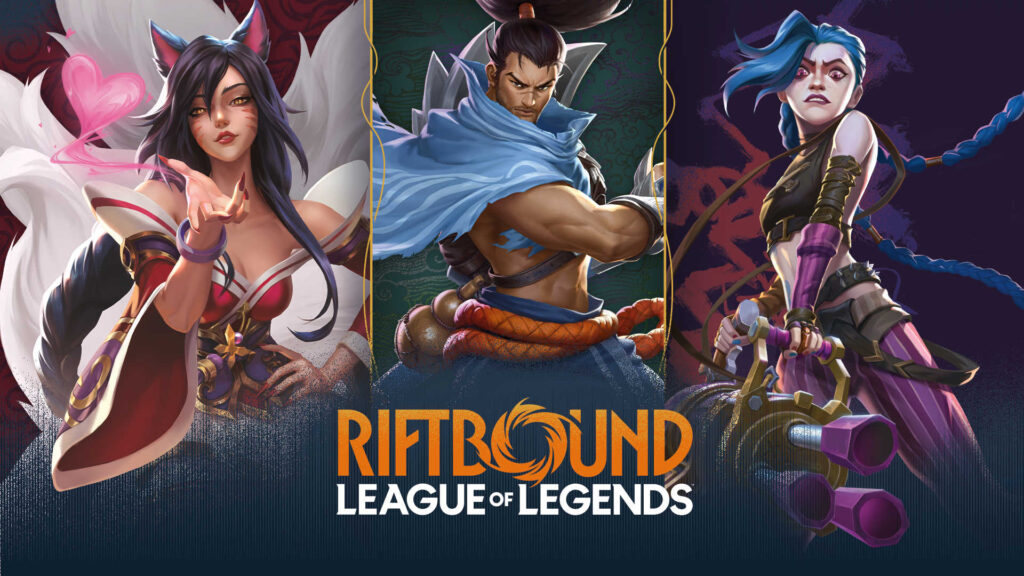
Not only has the League universe been featured in further titles that fit into different video game genres (including a digital card game named Legends of Runeterra), you can also find the setting expanded into music, comics and a very popular animated series on Netflix: Arcane.
With Arcane‘s second series, launched in late 2024, bringing the League lore to an even wider audience than it already had (the original MOBA having surpassed the 100 million player mark by 2017), and with the popularity of the universe showing no signs of slowing down in general, the time feels right for a physical TCG. Particularly as the trading card game sector has seen some serious growth in the last few years, with games such as Disney Lorcana and Star Wars Unlimited bringing the first real competition to the big three (Magic: The Gathering, Pokémon and Yu-Gi-Oh!) for a very long time.
How to Play Riftbound
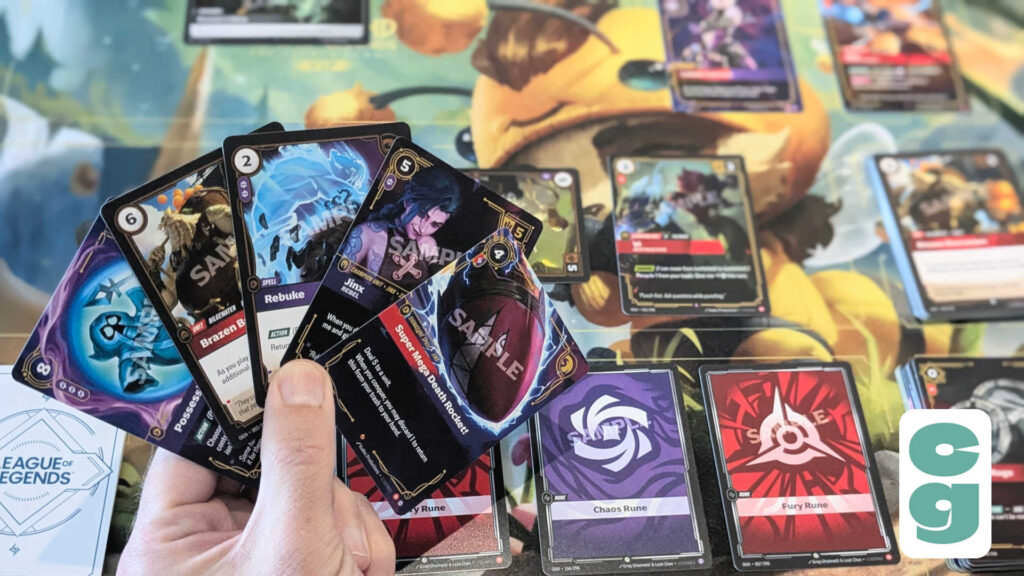
Riftbound is a trading card game in which players choose a Legend from the League of Legends universe and battle at least one other player with their deck of units, spells and gear. To replicate the feel of fighting over territory in League of Legends, players try to conquer different battlefields in play, earning points when they do so, and win the game if they’re the first to reach 8 points.
Though most players will be expecting a 2 player, 1v1 experience (which of course, it plays perfectly well as), Riftbound has been built from the ground up to support up to 4 player gameplay, either in teams or as a free-for-all, with minimal difference to the rules. Each player starts with a 39 card deck, plus their Legend, the matching Champion Unit and (if possible) their Signature Spell.
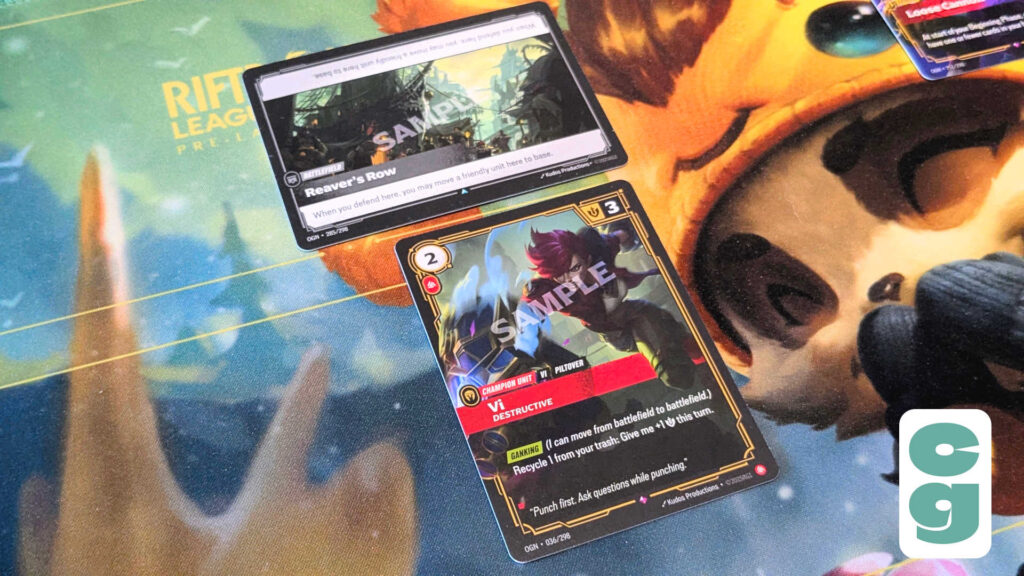
Each turn, players will refresh their exhausted cards, draw 2 cards from their Rune deck and then play cards from their hand (Runes are used to pay to bring cards into play, much like Land in Magic: The Gathering, Energy in Pokémon or Ink in Disney Lorcana), as well as moving cards to and from their Base to Battlefield(s), engaging in combat against enemy units at Battlefields to vie for control of them, with an example Battlefield and Unit card shown above.
Much like any TCG you can name, the basics of Riftbound are incredibly easy to pick up, with a simple, easy to remember turn of phases and a straightforward, intuitive combat sequence; the synergies and deeper strategies come into play via the cards that you’ll choose to take into battle.
What Makes Riftbound Unique?
Many of Riftbound’s mechanics will be familiar to long term TCG players, particularly if they have experience of several different trading card games. That’s certainly not a bad thing, and it does help in learning the game that much of its structure and mechanics are analogous to other games. For example, the usage of two colors for your deck, based on the colors of your Legend, evokes titles such as One Piece or Star Wars Unlimited. In those titles, decks are built around the colors featured on unique, powerful characters which start the game in-play, and with their own, special abilities which decks are built to take advantage of, and that’s something that Riftbound does really well.
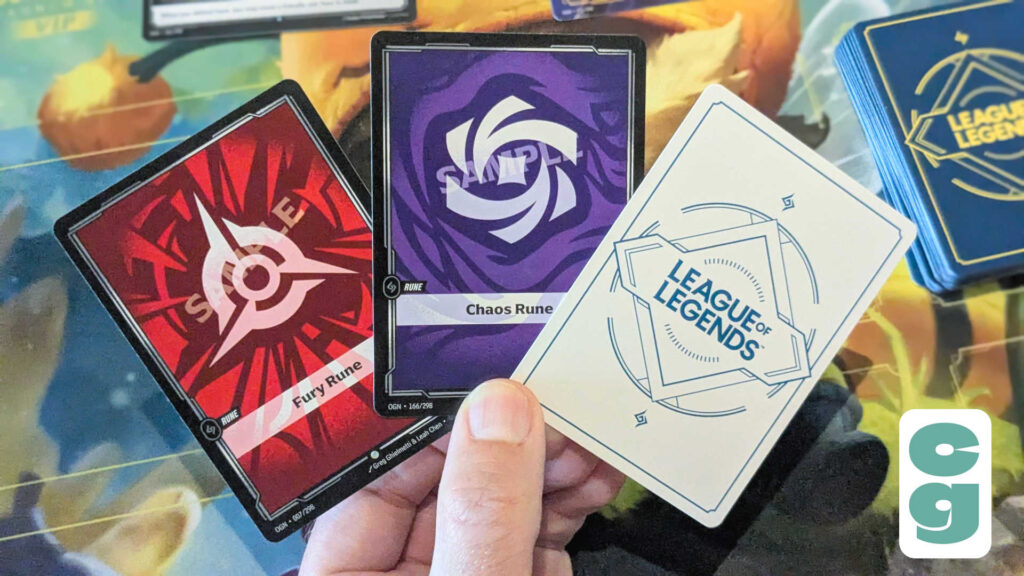
However, elements such as the Rune deck, though bearing a passing resemblance to the DON!! deck in One Piece, feel unique to Riftbound itself. In the case of the Rune deck, it’s a separate deck which you can build using the Rune colors of cards in your deck; for example, Jinx (who was the Legend I chose when building my own deck) uses Red ((Fury) and Purple (Chaos) Runes as the colors in her Rune deck, and though you’ll always have 12 Rune cards, the number of each color card you include is entirely up to you. The Fury and Chaos Rune cards, along with the Rune card back, are shown above.
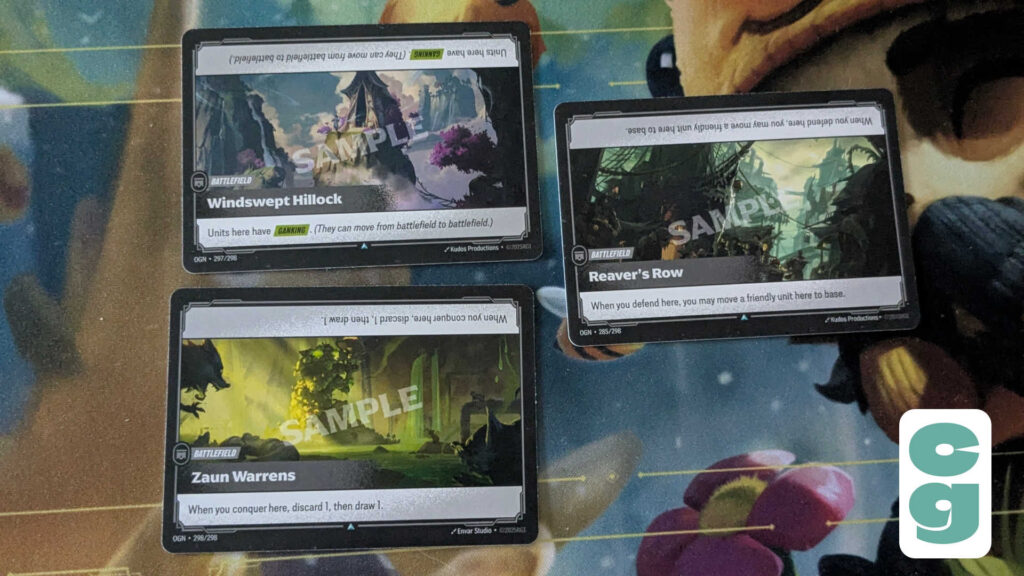
The Battlefield cards are another area where Riftbound feels unique; though this did remind me somewhat of the classic Call of Cthulhu CCG’s Story card mechanic, the fact that Battlefields are treated as locations to move to from your Base (and vice versa) makes them feel more like physical spaces to be defended and conquered, with movement of units being a major key to success. Each one, as you can see in the image above, also has a unique effect, making certain Battlefields more tempting to go for in order to secure certain bonuses, or to stop your opponent getting the bonus themselves!
Is Riftbound Fun to Play?
Having now played multiple games of Riftbound, and even having the opportunity not just to build my own deck, but to play against opponents who’d also built their own, I can say with some authority that Riftbound is an excellent experience. It has a great mix of familiar and unique mechanics, feeling different enough to set itself apart in the TCG sector. Its initial, 300-card Origins set features a robust assortment of cards, with an impressive depth and breadth of mechanics and synergies on offer, to suit a wide variety of playstyles.
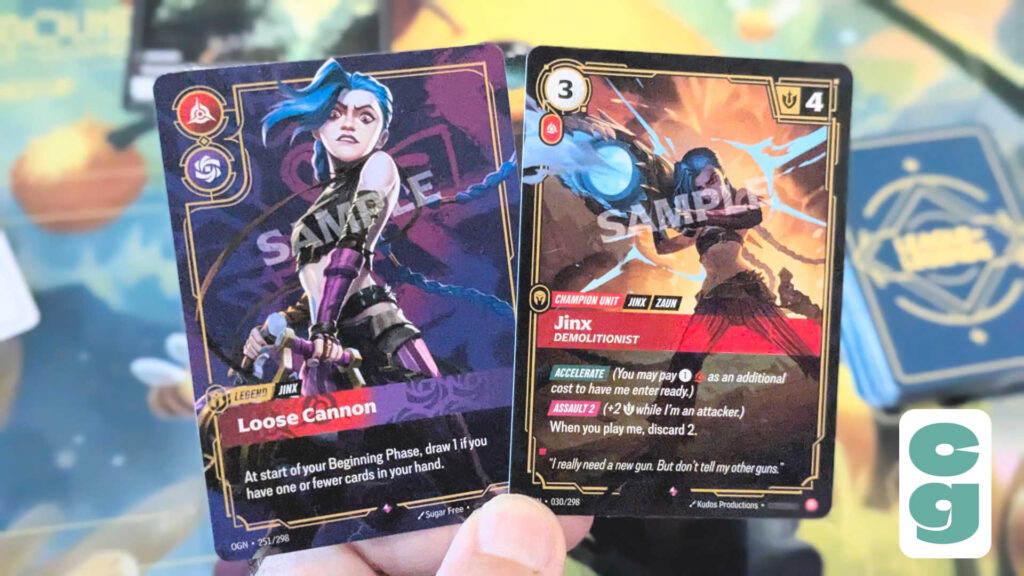
The League of Legends ambience, and even the aim of capturing and defending territory, is brilliantly evoked in Riftbound, with the cards being beautifully illustrated; if you’re already a fan of League and its spin-offs, you’ll find plenty of familiar faces, places and gear in Riftbound.
When Will Riftbound Be Released?
The first set for Riftbound, which is named Origins, is due for release in October 2025. Alongside three Champion decks (featuring Jinx, Lee Sin and Viktor) and booster packs, players will also be able to get their hands on the Proving Grounds set, which will be the easiest way to learn and play Riftbound. The Proving Grounds set is packaged much like a board game, and features four decks to support up to 4 players simultaneously, including exclusive cards and accessories (such as acrylic Legend point tracker tokens) to streamline the learning and playing experience.
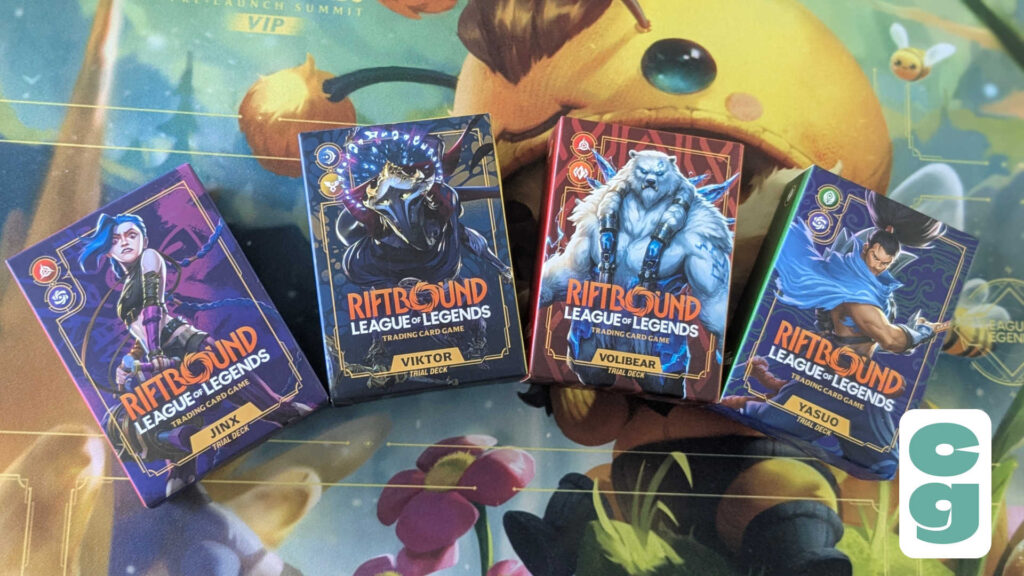
Though not for sale, the trial decks pictured above will be available to onboard new players via in-store demos, and give fans a great taste of what the Origins set will offer, especially as each deck plays very differently to the others.
Stay tuned for much more coverage of Riftbound, with a look at specific mechanics, cards and decks coming soon!
Want to check out other card games based on video games? Take a look at our review of Slay the Spire: The Board Game, a self-contained title which should keep you occupied as you wait for Riftbound, or Adventure Time: Card Wars, which made the leap not only between the digital realm to the physical, but also sprang from an actual episode of the popular animated show!
